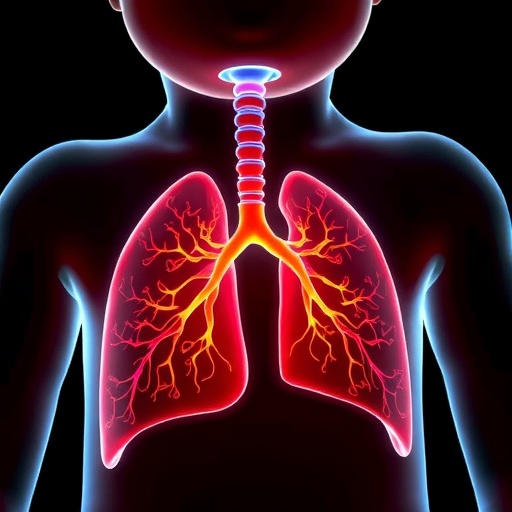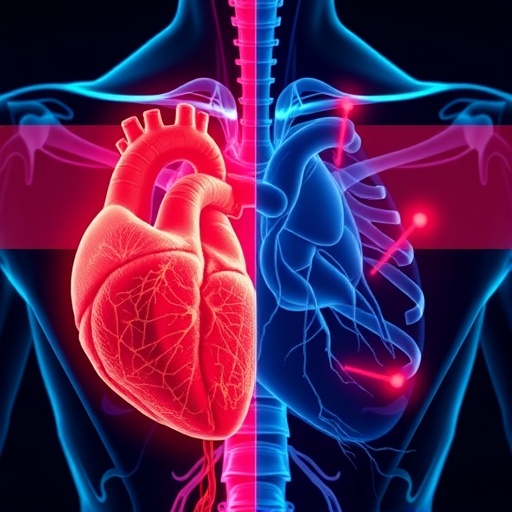Regional lung function in congenital diaphragmatic hernia assessed using electrical impedance tomography

Levin, D. L. Morphologic analysis of the pulmonary vascular bed in congenital left-sided diaphragmatic hernia. J. Pediatr. 92, 805–809 (1978).
Google Scholar
Kinsella, J. P. et al. The left ventricle in congenital diaphragmatic hernia: implications for the management of pulmonary hypertension. J. Pediatr. 197, 17–22 (2018).
Google Scholar
Bohn, D. Congenital diaphragmatic hernia. Am. J. Respir. Crit. Care Med. 166, 911–915 (2002).
Google Scholar
Kotecha, S. et al. Congenital diaphragmatic hernia. Eur. Respir. J. 39, 820–829 (2012).
Google Scholar
Deprest, J. A., Flemmer, A. W., Gratacos, E. & Nicolaides, K. Antenatal prediction of lung volume and in-utero treatment by fetal endoscopic tracheal occlusion in severe isolated congenital diaphragmatic hernia. Semin Fetal Neonatal. Med. 14, 8–13 (2009).
Google Scholar
Khalaj, K., Antounians, L., Figueira, R. L., Post, M. & Zani, A. Autophagy is impaired in fetal hypoplastic lungs and rescued by administration of amniotic fluid stem cell extracellular vesicles. Am. J. Respir. Crit. Care Med. 206, 476–487 (2022).
Google Scholar
Tingay, D. G. & Kinsella, J. P. Heart of the matter? Early ventricular dysfunction in congenital diaphragmatic hernia. Am. J. Respir. Crit. Care Med. 200, 1462–1464 (2019).
Google Scholar
Snoek, K. G. et al. Conventional mechanical ventilation versus high-frequency oscillatory ventilation for congenital diaphragmatic hernia: a randomized clinical trial (The VICI-trial). Ann. Surg. 263, 867–874 (2016).
Google Scholar
Snoek, K. G. et al. Standardized postnatal management of infants with congenital diaphragmatic hernia in Europe: the CDH EURO consortium consensus – 2015 update. Neonatology 110, 66–74 (2016).
Google Scholar
Puligandla, P. et al. Diagnosis and management of congenital diaphragmatic hernia: a 2023 update from the canadian congenital diaphragmatic hernia collaborative. Arch. Dis. Child Fetal Neonatal. Ed. 109, 239–252 (2024).
Google Scholar
Thome, U., Topfer, A., Schaller, P. & Pohlandt, F. Comparison of lung volume measurements by antero-posterior chest X-ray and the SF6 washout technique in mechanically ventilated infants. Pediatr. Pulmonol. 26, 265–272 (1998).
Google Scholar
Frerichs, I. et al. Chest electrical impedance tomography examination, data analysis, terminology, clinical use and recommendations: consensus statement of the translational EIT development study group. Thorax 72, 83–93 (2017).
Google Scholar
De Luca, D. et al. Personalized medicine for the management of RDS in preterm neonates. Neonatology, 118, 127–138 (2021).
He, L. L. H. et al. Lung ultrasound detects regional aeration inhomogeneity in ventilated preterm lambs. Pediatr. Res 95, 129–134 (2024).
Google Scholar
Comparini, R. G., Falcao, M. C., Johnston, C. & Carvalho, W. B. Electrical impedance tomography in congenital diaphragmatic hernia. Clin.76, e3210 (2021).
Google Scholar
Schroeder, L. et al. Evaluation of regional ventilation distributions in newborns with congenital diaphragmatic hernia. Am. J. Respir. Crit. Care Med. 209, 601–606 (2024).
Google Scholar
Bhatia, R. et al. Extubation generates lung volume inhomogeneity in preterm infants. Arch. Dis. Child Fetal Neonatal. Ed. 107, 82–86 (2022).
Google Scholar
Dowse, G. et al. Synchronized inflations generate greater gravity-dependent lung ventilation in neonates. J. Pediatr. 228, 24–30 e10 (2021).
Google Scholar
Thomson, J. et al. Regional ventilation characteristics during non-invasive respiratory support in preterm infants. Arch. Dis. Child Fetal Neonatal. Ed. 106, 370–375 (2021).
Google Scholar
Sophocleous, L. et al. Effect of sternal electrode gap and belt rotation on the robustness of pulmonary electrical impedance tomography parameters. Physiol. Meas. 41, 035003 (2020).
Google Scholar
Becher, T. H. et al. Prolonged continuous monitoring of regional lung function in infants with respiratory failure. Ann. Am. Thorac. Soc. 19, 991–999 (2021).
Miedema, M. et al. Individualized multiplanar electrical impedance tomography in infants to optimize lung monitoring. Am. J. Respir. Crit. Care Med. 195, 536–538 (2017).
Google Scholar
Bhatia, R., Davis, P. G. & Tingay, D. G. Regional volume characteristics of the preterm infant receiving first intention continuous positive airway pressure. J. Pediatr. 187, 80–88 (2017).
Google Scholar
Miedema, M., de Jongh, F. H., Frerichs, I., van Veenendaal, M. B. & van Kaam, A. H. The effect of airway pressure and oscillation amplitude on ventilation in pre-term infants. Eur. Respir. J. 40, 479–484 (2012).
Google Scholar
Tingay, D. G. et al. Inflating pressure and not expiratory pressure initiates lung injury at birth in preterm lambs. Am. J. Respir. Crit. Care Med. 208, 589–599 (2023).
Google Scholar
Tingay, D. G. et al. Gradual aeration at birth is more lung protective than a sustained inflation in preterm lambs. Am. J. Respir. Crit. Care Med. 200, 608–616 (2019).
Google Scholar
Patel, N. Use of milrinone to treat cardiac dysfunction in infants with pulmonary hypertension secondary to congenital diaphragmatic hernia: a review of six patients. Neonatology 102, 130–136 (2012).
Google Scholar
Schinckel, N. F. et al. Skin-to-skin care alters regional ventilation in stable neonates. Arch. Dis. Child Fetal Neonatal Ed. 106, 76–80 (2021).
Google Scholar
Gattinoni, L., Caironi, P., Pelosi, P. & Goodman, L. R. What has computed tomography taught us about the acute respiratory distress syndrome? Am. J. Respir. Crit. Care Med 164, 1701–1711 (2001).
Google Scholar
Pellicano, A. et al. Comparison of four methods of lung volume recruitment during high frequency oscillatory ventilation. Intensive Care Med. 35, 1990–1998 (2009).
Google Scholar
Jank, M., Doktor, F., Zani, A. & Keijzer, R. Cellular origins and translational approaches to congenital diaphragmatic hernia. Semin Pediatr. Surg. 33, 151444 (2024).
Google Scholar
Pillow, J. J. High-frequency oscillatory ventilation: mechanisms of gas exchange and lung mechanics. Crit. Care Med. 33, S135–S141 (2005).
Google Scholar
Scott, T. J. A., Jacob, C., Tingay, D. G. & Leontini, J. S. Gas transport mechanisms during high-frequency ventilation. Respir. Res. 25, 446 (2024).
Google Scholar
Patel, N. et al. Ventricular dysfunction is a critical determinant of mortality in congenital diaphragmatic hernia. Am. J. Respir. Crit. Care Med. 200, 1522–1530 (2019).
Google Scholar
Carlisle, H. R. et al. Regional distribution of blood volume within the preterm infant thorax during synchronised mechanical ventilation. Intensive Care Med. 36, 2101–2108 (2010).
Google Scholar
Peetsold, M. G. et al. The long-term follow-up of patients with a congenital diaphragmatic hernia: a broad spectrum of morbidity. Pediatr. Surg. Int. 25, 1–17 (2009).
Google Scholar
Ijsselstijn, H., Tibboel, D., Hop, W. J., Molenaar, J. C. & de Jongste, J. C. Long-term pulmonary sequelae in children with congenital diaphragmatic hernia. Am. J. Respir. Crit. Care Med. 155, 174–180 (1997).
Google Scholar
Peetsold, M. G. et al. Pulmonary function and exercise capacity in survivors of congenital diaphragmatic hernia. Eur. Respir. J. 34, 1140–1147 (2009).
Google Scholar
Tingay, D. G. et al. Spatiotemporal aeration and lung injury patterns are influenced by the first inflation strategy at birth. Am. J. Respir. Cell Mol. Biol. 54, 263–272 (2016).
Google Scholar
Lally, K. P. et al. Standardized reporting for congenital diaphragmatic hernia-an international consensus. J. Pediatr. Surg. 48, 2408–2415 (2013).
Google Scholar
link






